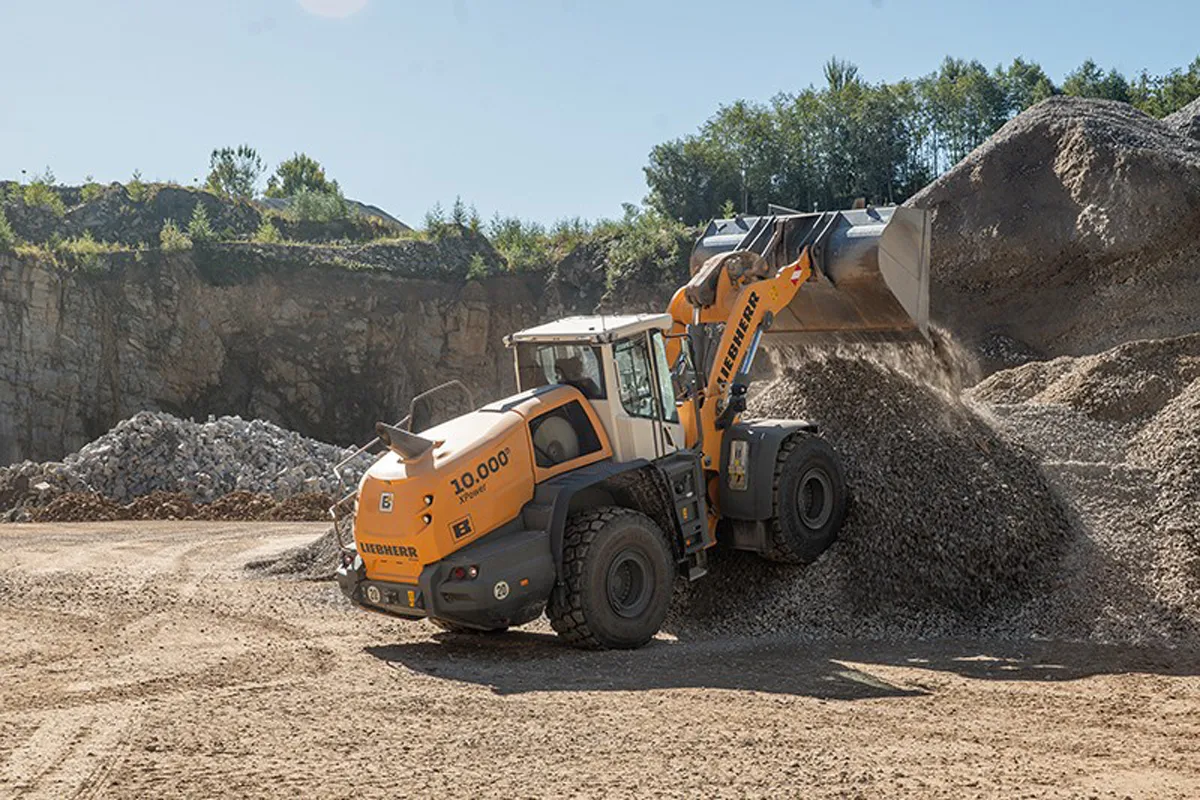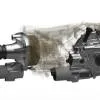Engineer Jagvir Goyal tells us what we need to know about asphalt hot mix plants.
Today, an engineer wouldn't dream of constructing a road without a hot mix plant. Indeed, there's no other way to ensure that he saves bitumen, gets strength and durability along with economy; reuses the aggregate scraped off the worn road; and opens the road to traffic immediately upon laying!
Premixing
Laying premix on the roads has become a common term these days. A premix can be cold or hot. Premix laying has advantages over conventional and old methods of surface dressing and penetration methods of road construction as it ensures easier quality control, controlled thickness, mass production, better compaction and uniform and proper coating of aggregate with bitumen. It also saves on bitumen consumption and is suitable for heavy-duty roads.
Hot mixing
While cold mix plants involve mixing of cold or lukewarm aggregate with hot or cold bitumen, hot mixing involves mixing of hot bitumen with heated aggregate. The aggregate is heated to near bitumen application degree.
Crushed stone, gravel, slag or natural aggregate is used as coarse aggregate. Its abrasion value is carefully checked on Los Angeles apparatus to be less than 25 as it will be subjected to continuous wearing under heavy traffic. Fine aggregate is used to fill voids in coarse aggregate and increase the strength and stability of the mix. It can be natural sand or crushed screening. Bitumen is used to bind the aggregates and make the course waterproof. Its properties depend upon the weather in which premix is being laid; 30/40, 60/70 and 80/100 bitumen is used in summers while 60/70, 80/100 and 180/200 bitumen is used in winters. The mixing temperature is kept in the range of 150°C to 185°C.
Hot mix plants
As the name suggests, hot mix plants produce a mix of heated ingredients ready to lay at site. The choice of a hot mix plant mainly depends upon the quantum of work to be handled as it determines capacity. Pollution norms and standards also become relevant as one needs to check whether the plant's emissions fall within permissible limits in force in the area where it is being used.
The factors to be considered while selecting a hot mix plant include capacity; initial cost; power consumption; pollution control features; efficiency and continuous working; fuel consumption; maintenance features; easy transportability; and quality of mix produced.
Functions and components
A hot mix plant is supposed to receive aggregates and heat, dry, screen, measure and mix them with a measured quantity of filler and bitumen to continuously produce a homogenous mix ready to lay at site. Only continuous plants are used these days as they are efficient, economical and have a lower initial cost than earlier batch type plants. Thus, while specifying requirements or approving a plant for usage, one should check that it is continuous type, has adequate capacity and can produce uniform quality mix.
A hot mix plant essentially has the following components:
1. Cold aggregate feeder
2. Screening and grading unit
3. Dryer and heater
4. Mixing unit
5. Filler supply unit
6. Bitumen storage, heater and delivery system
7. Mix storage compartment
8. Operator's unit
Cold aggregate feeder
The cold aggregate feeder of a hot mix plant has at least three independent compartments to store aggregates. Each is provided with an accurate mechanical system to feed the aggregate at a predetermined rate to the next component that could be the cold elevator, conveyor or dryer. The feeder can be locked at any setting. The cold aggregate feeder ensures an accurate proportion of aggregate sizes. The number of compartments may go up to five. Aggregates can be fed by weight or volume. Each compartment is provided with a rigid frame-mounted hopper. The hoppers are provided with precision gates.
Screening and grading unit
A hot mix plant has the provision for screen dried aggregate in different sizes and further proportion each size of aggregate by weight or volume. When gradation is by volume, a feeder unit is mounted under the compartments. Its belt speed can be accurately set to regulate the rate of flow of aggregates. The precision gates of the hoppers are opened to create openings of such sizes that allow proportioning of material drawn from each compartment. The openings or orifices can be locked in position and are provided with mechanical adjustment arrangements. The size of the opening can be read. In case the aggregates are to be added by weight, a weighing system is provided on each belt. The operator in the cabin can read the weight readings for each size of aggregate.
Dryer and heater unit
The dryer agitates the aggregates continuously while heating them at the preset temperature. It also provides the temperature of aggregate from each compartment at the discharge point. The dryer unit is provided with a dust collector system that helps meet pollution control regulations. The dust collector system removes suspended particulate from the gas that is discharged by the dryer and heater unit into the atmosphere.
Mixing unit
A hot mix plant has a twin-shaft pug mill mixer to produce a uniform mix. It is provided with the means to synchronise the aggregate, filler and bitumen feeds by creating interlocking control over the flow of the three materials. The aggregates are first mixed well in a cold state. Then, they are dried and heated. Next, the binder is added to them to coat the aggregates well.
Filler supply unit
A hot mix plant has a filler supply unit to feed the filler directly into the mixer. It has a hopper over the filler bin, provided to adjust the proportion of the supply of filler. Proportioning is done by a variable speed conveyor with a variable speed motor. It can be locked at a desired proportioning position.
Bitumen storage, heater and delivery system
A hot mix plant has a bitumen storage unit and a circulation and heating system. The heating system effectively controls the temperature of heated bitumen in the tank as well as the circulation system and has the provision to record its temperature at both locations. Heating of bitumen is done electrically, by firing the oil or through hot oil circulation. When hot oil is circulated, circulating pumps for the same are provided in the unit. The heated bitumen continuously circulates between the storage tank and proportioning units during the entire period of use of the plant. The binder temperature at the time of mixing is kept between 150-177°C. Care is taken that the difference in temperature of aggregates and binder is not more than 14°C at any time.
Mix storage compartment
A mix storage compartment is essentially created in hot mix plants to store the material till it is discharged at the desired location. A storage silo is created for this purpose. From the storage unit, the mix is discharged into the trucks through hydraulically operated gates that control its flow and quantity. All through the operation — delivery of mixed material to the storage compartment and further discharge into the trucks — care is taken to ensure that no segregation of mixed material takes place.
Operator's unit
The operator's cabin is equipped with all sorts of controls and reading units. The operator can operate the motors, belts and units by pushing buttons. He can control the flow rate of aggregates, bitumen and filler and can operate the hydraulic gates of the mix storage compartment.
Performance review
By carefully examining the final mix produced by the hot mix plant, one can assess whether the plant is producing a mix of desired quality. Here are a few indicators of improper functioning or operation of a hot mix plant:
1. If the mix is flowing too much, it means excessive addition of bitumen, causing over consumption as well as improper mix production.
2. If the mix is looking dry and dull, it means lower than required quantity of bitumen has been added to it.
3. If the mix is looking dull in some places and too shiny at others, it indicates improper mixing.
4. If the laid premix looks too open textured, it means the aggregate has not been mixed properly and its grading has not been ensured.
5. If the rollers leave their marks on the laid carpet, it means the filler and the bitumen have been added in excess or not properly mixed.
6. If s in the carpet appear, it means excess of filler and less bitumen has been added to the mix.
Hot mix plant manufacturers
Wirtgen India, the Indian branch of the German equipment manufacturer, has tied up with the world-reputed European group Sim Ammann for hot mix asphalt batch mix plants that conform to the highest European standards. Wirtgen India provides both stationary and mobile hot mix plants with capacity varying between 70 tonne and 320 tonne per hour (tph).
Ammann, a Swiss firm, is more than 100 years old with manufacturing facilities in Germany and Italy and a technology centre in Switzerland. It produces both batch and continuous hot mix plants. The firm particularly concentrates on dust collection technology by adding a centrifugal force coarse dust separator upstream of the bag filter of the equipment to minimise emission and meet global environmental standards. The filter bags are automatically cleaned by rotating air flush nozzles. All ingredients are mixed by weight on electronic scales. The filler material is also warmed in Ammann plants as a warm filler is covered better and more quickly with asphalt. Filler particles have a larger surface area and constitute 60-70 per cent of the area to be coated with bitumen.
India has many hot mix plant manufacturers such as Apollo, Speedcrafts, Capious and Kaushik. Benefits of indigenously produced equipment include economy and easy availability of service and spares. However, the buyer has to ensure that the equipment produces the mix of desired quality to meet the laid specifications.
With its works located in Patna, Speedcrafts Ltd produces both batch and drum hot mix plants. It offers six models of drum plants with a capacity as little as 15 tph and as high as 150 tph. The plant is equipped with a four-bin feeder built on a single chassis. Each bin is provided with a radial fan to regulate aggregate flow. A single vibrating screen is provided on the conveyor to segregate oversized aggregate supplied by the bins. The bitumen tanks are one or two in number with capacity up to 30 mt each. The dust collection system has the usual cyclones, exhaust fan and chimney. The lead out conveyor feeds the mixed aggregate to tippers. A hot mix storage silo is also provided as an optional item. The bitumen tanks are lined with insulation wool. Speedcrafts is also concentrating on providing an air-conditioned, operator-friendly cabin with fully automatic feather touch controls on the control panel for complete control on quantity and quality of materials and complete safety precautions against short circuits and overloading. Its batch hot mix plants have a capacity ranging from 60 tph to 160 tph.
Ahmedabad-based Kaushik Engineering Works produces both stationary and mobile drum hot mix plants. It offers five models of stationary plants with capacity varying from 35 tph to 150 tph and four models of mobile hot mix plants with capacity varying from 20 tph to 90 tph.
Capious Roadtech, Ahmedabad, produces six models of drum mixing plants with capacity ranging from 40 tph to 200 tph. It can customise the hot mix plant as per the requirement of the user.
The Apollo Group of Ahmedabad has created a name for itself in the hot mix plant category. The company produces plants both for domestic and international markets; it has installed them in over 35 countries. Apollo produces both batch and drum continuous plants. It further divides its plants into portable and mobile types. Its batch plants are covered under the ANP series while the drum continuous plants come under the DM, DMX, Mobimix and MDM series. The DM designation relates to domestic portable products and DMX is for international market portable plants. Similarly, Mobimix denotes international mobile drum type plants and MDM stands for domestically supplied mobile plants. Apollo currently produces 23 models of batch and continuous plants; of these, eight models are batch type, eight are portable drum plants and seven are mobile drum plants. While the capacity of batch plants varies from 120 tph to 240 tph, portable drum plants are produced for 60 tph to 150 tph capacity. Mobile plants have a capacity range of 30 tph to 120 tph. The domestic series of mobile drum plants has a capacity of only 30 tph while the internationally marketed plants have a capacity of 45, 60, 90 and 120 only. Apollo has made an elaborate study of domestic and international demand for asphalt hot mix plants before determining its models and their features.



















